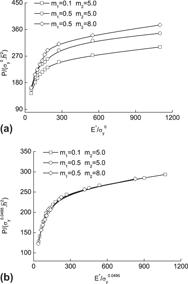Article contents
Identification of the hardening behavior of solids described by three-parameter Voce law using spherical indentation
Published online by Cambridge University Press: 31 July 2012
Abstract

Methods for identifying the hardening behavior of solids described by power law through indentation testing have been well developed. However, many important engineering materials deviate from the power law description significantly. After fitting the uniaxial curves of several typical materials, the three-parameter relationship proposed by Voce [E. Voce, J. Inst. Met.74, 537–562 (1948)] is chosen to describe the hardening behavior for its fitting performance and inherent simplicity. Based on the Voce law, an efficient method is formulated to extract the hardening data from a single spherical indentation curve. Improved identifying performance is manifested by applying the method to four metallic materials. It is validated that the present method has the ability to effectively identify the plastic properties of materials through spherical indentation testing.
- Type
- Articles
- Information
- Copyright
- Copyright © Materials Research Society 2012
References
REFERENCES
- 5
- Cited by




